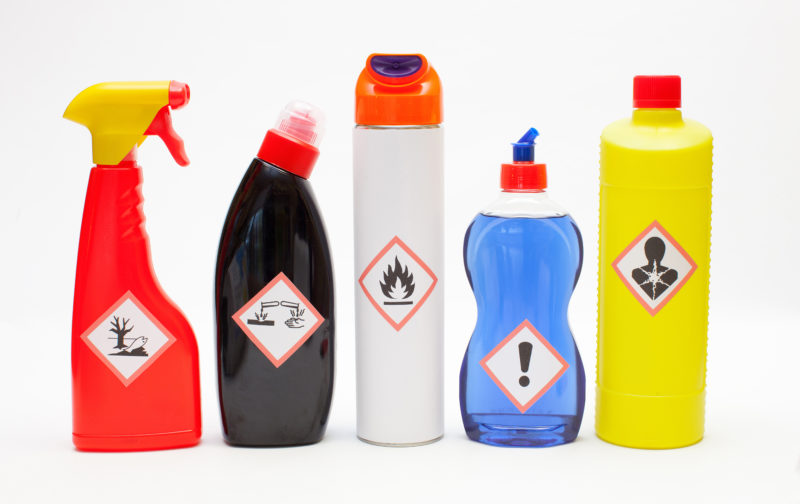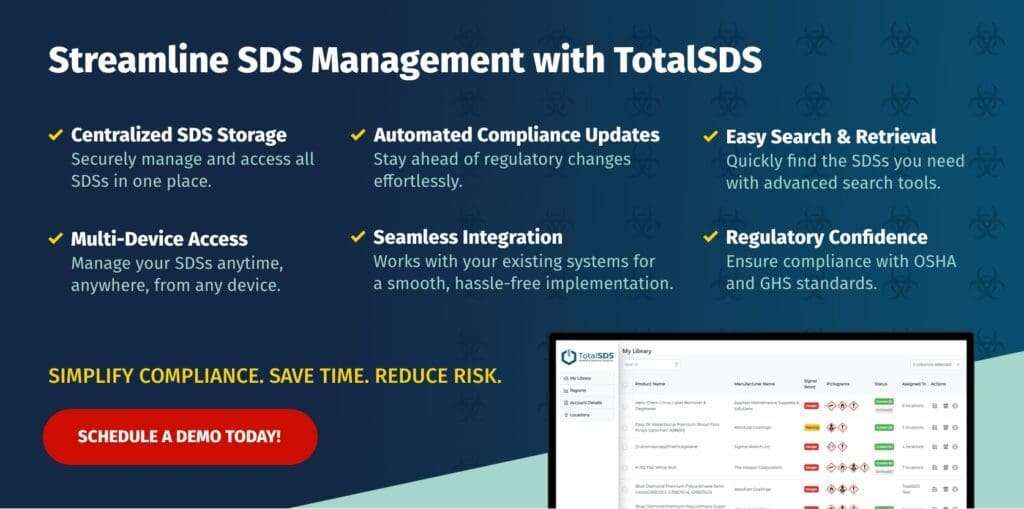When people think of chemicals, it often evokes images of scientists in white coats toiling away in laboratories but in reality, chemicals are also found in many of the products we use at home and at work. And while they have a variety of beneficial uses, chemicals can also be extremely dangerous if misused or mishandled.
Defining Hazardous Chemicals
OSHA’s Hazard Communication Standard (HCS) defines a hazardous chemical as ‘any chemical which can cause a physical or a health hazard.’
And with so many employees regularly exposed to or using hazardous substances at work, knowing how to identify common workplace chemical hazards – and how to avoid them – becomes paramount.
Employers with hazardous substances are legally obliged to include warning labels and Safety Data Sheets (SDS) with their products as chemical hazards and toxic substances can present a wide range of short- and long-term health issues, including poisoning, skin rashes, and disorders of the lung, kidney, and liver.
All chemicals exist in one of three states: solid, liquid or gas. And as a middle-school science refresher, each is defined as follows:
- Solids have a definitive shape and form, whether it’s a dust particle or a steel pipe.
- Liquids are a formless fluid that take the shape of their container. Solvents and oils are examples of liquid chemicals.
- Gases, usually invisible but sometimes detectable by taste or smell, are formless substances that expand to occupy all the space of their container. Oxygen and carbon monoxide are examples of gaseous chemicals.
Common Workplace Chemical Hazards
Knowing the physical states of hazardous chemicals is an important factor in understanding their health effects as their physical state determines how it may enter the body. For example, a gas may enter the body by inhalation, whereas liquids may be absorbed by the skin.
Some commonly used workplace chemical hazards include:
- Acids
- Caustic substances
- Cleaning products such as toilet cleaners, disinfectants, mildew remover and chlorine bleach
- Glues
- Heavy metals, including mercury, lead, cadmium, and aluminum
- Paint
- Pesticides
- Petroleum products
- Solvents
- Photocopier toner
Avoiding Chemical Hazards in the Workplace
So in order to ensure chemical safety in the workplace, information about the identities and hazards of the chemicals must be available and understandable to workers. OSHA’s Hazard Communication Standard (HCS) is designed to ensure that information about chemical and toxic substance hazards in the workplace and associated protective measures is disseminated to workers.
Let GSM help you simplify your process and ensure safety and compliance with our SDS management software to help you keep your safety data sheets readily available, up-to-date and easily accessible across all devices. Our team can help you keep up with the ever-changing regulations for your safety data sheets so you can be sure you provide the best environment for your employees.



